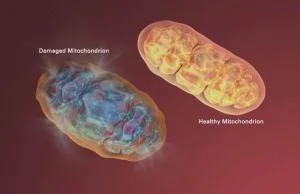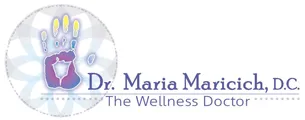The Ketogenic Diet is beneficial for:
Overall improved health
Weight loss resistance
Cancer prevention
Improved performance
Reduced inflammation
Diabetes
Metabolic syndrome
Seizures and brain health
Preventing dementia
Anti-aging
What is the Ketogenic Diet?
It is a low carb (carbohydrate), high fat, moderate protein diet. The dietary regimen shifts your metabolism from burning carbs to burning fats for energy. This helps repair the mitochondria and reduce inflammation; which is linked with all the above conditions. Just think of trading your carbs (grains, crackers, pasta, bread) for good fats (coconut, avocado, olive and MCT oil). The metabolism of fat creates ketones or ketone bodies, that is where the name Ketogenic Diet comes from.
Approved Ketogenic Diet Foods
Below you will find a list of foods adapted from the Mitochondria Repair Diet distributed by the Institute of Functional Medicine. Dr. Maria's background is in Functional Medicine with an emphasis on neurology, endocrinology, and immunology.
What are Mitochondria?
Every disease is a disease of the cell and the mitochondria are the powerhouse of the cell. In other words, they produce all the energy your body needs to remain functioning.

How do I determine what I should eat and how much?
Do not eat more than 30 to 50 grams of carbohydrate per day. To determine how much protein, divide your weight in half. That is the amount of protein you should eat in grams. For example, if you weigh 200 pounds then you would eat about 100 grams of protein per day. Your remaining calories should come from fats and oils. Set up a free account on MyFitnessPal.com. Then go to settings and input these numbers. Or you could put 5% carbs, 20% protein and 75% fats. If you need to lose weight, reduce your total calories as well. Don’t worry, you won’t be hungry, once you are keto adapted. Input all the food you eat for a week or so. This will give you a sense of what you need to eat.
I can’t imagine eating that much fat!
Put oil, butter and cream (if you are not sensitive to dairy) in everything. Have you heard of Bulletproof coffee? They started the trend of adding grass-fed butter and coconut oilor MCT oil to coffee and tea. Try it blended, it’s darn good. Eat bacon, sausage and eggs too. But it’s best to eliminate all toxins so stay away from nitrates and nitrites by making sure your pork products are clean. Try Applegate brand. Make smoothies with vegan protein powder, greens and MCT oil. Search the internet for recipes. There are many sites offering resources for the ketogenic diet, even yummy desserts. Below you will find links to some of our favorites.
What is MCT oil?
It is a “medium chain triglyceride” derived from coconut oil. It is like putting high octane fuel in your body because it goes straight to the liver and raises metabolism and ketones. It’s particularly good for the brain, even if you are not doing the Ketogenic Diet. We sell a very high quality MCT oil or it can be found at most health food stores. It is liquid and has very little taste.
How do I know if I am in Ketosis?
Being in "ketosis" means your cells are predominantly utilizing fats for fuel. If you have achieved a state where you have little hunger and your energy level is good you are probably in ketosis. (this state of mild ketosis is different than diabetic ketosis which can be quite dangerous)
However, we recommend you test yourself. The ideal way to test is by finger prick, using the Precision Xtra blood Ketone monitor. It can be purchased on Amazon. To be in ketosis your ketones must be about 1-5 on the monitor. The monitor also measures blood glucose. Once you are nicely keto-adapted your blood glucose levels should be below 100 and maybe even as low as 60.
Another way to test is using Ketone stix to measure urine ketones. This method is cheaper and easier, but less accurate because you can be in ketosis and not have ketones in the urine, especially as your body becomes more efficient at burning ketones. Ketone stix can be purchased at some drugstores or online.
A person who is quite active or an athlete may be able to eat 100 grams of carbs a day and stay in ketosis, whereas a more sedentary individual may only be able to eat 20. Also caffeine consumption can throw some people out of ketosis. Things like this are a good reason to test ketones so you know 1) if you are really in ketosis and 2) what the boundaries are for you personally.
What does it mean to be keto adapted?
Most people’s bodies are in the habit burning carbs for fuel. But the cell, or more accurately, the mitochondria should be able to switch back and forth as needed. The Standard American Diet is laden with way more carbs than the body was really designed for. Most packaged foods, all grains, quick foods and deserts have large quantities of carbs which convert to sugar before being used for energy. Becoming “keto adapted” means your cells have learned to utilize fats for fuel again. In so doing you are actually healing the cell. But because habits are hard to break, it may take a little while to make the shift at the cellular level. During this time, you may be slightly flu-ish, fatigued, feel unsatisfied or have worse than usual cravings. Hang in there, soon you will be feeling GREAT!
Click here to download a food list and guide. And click here to download a booklet from the Institute of Functional medicine which thoroughly covers the function of the mitochondria and why this program is so beneficial for your overall health.
